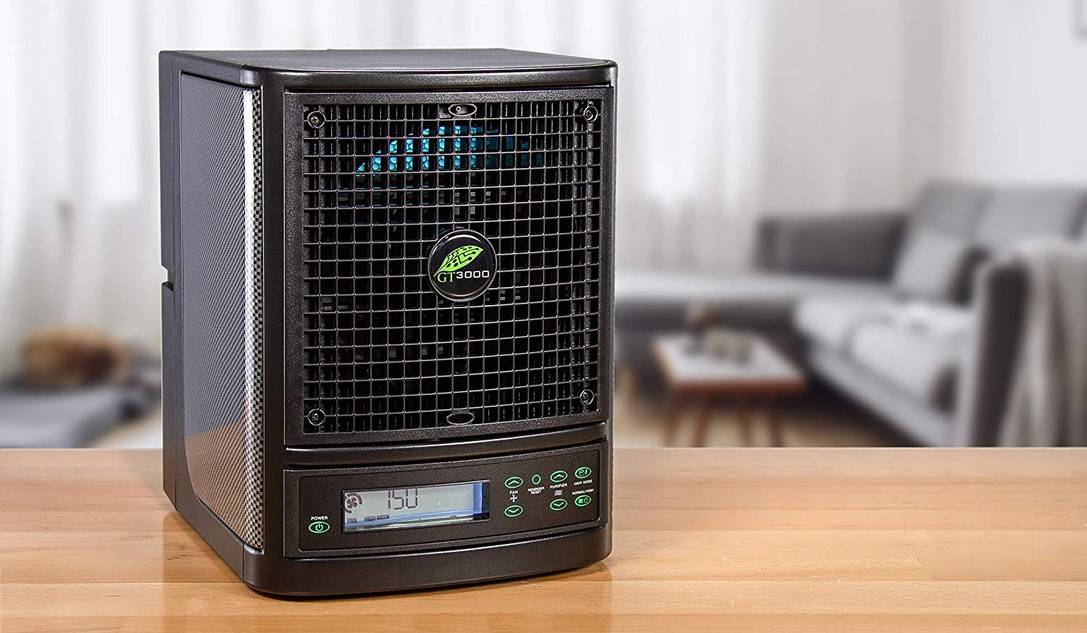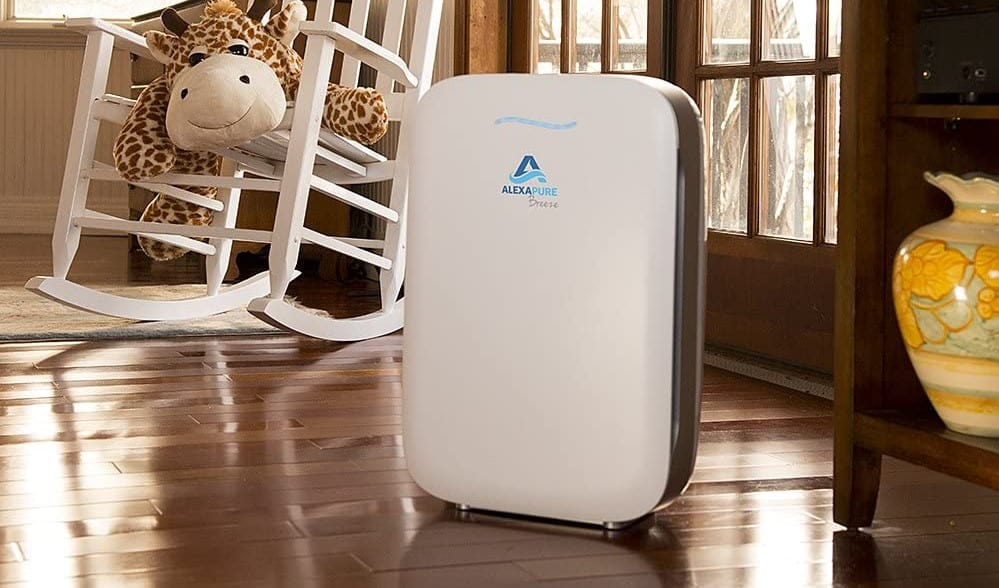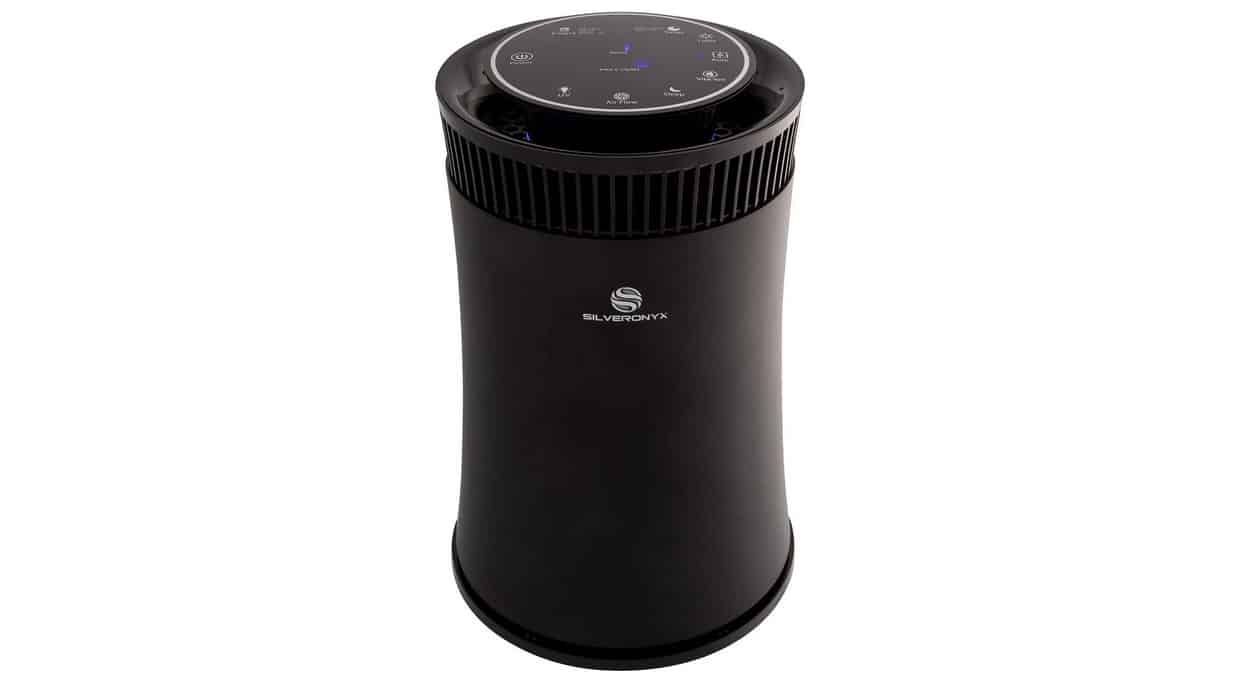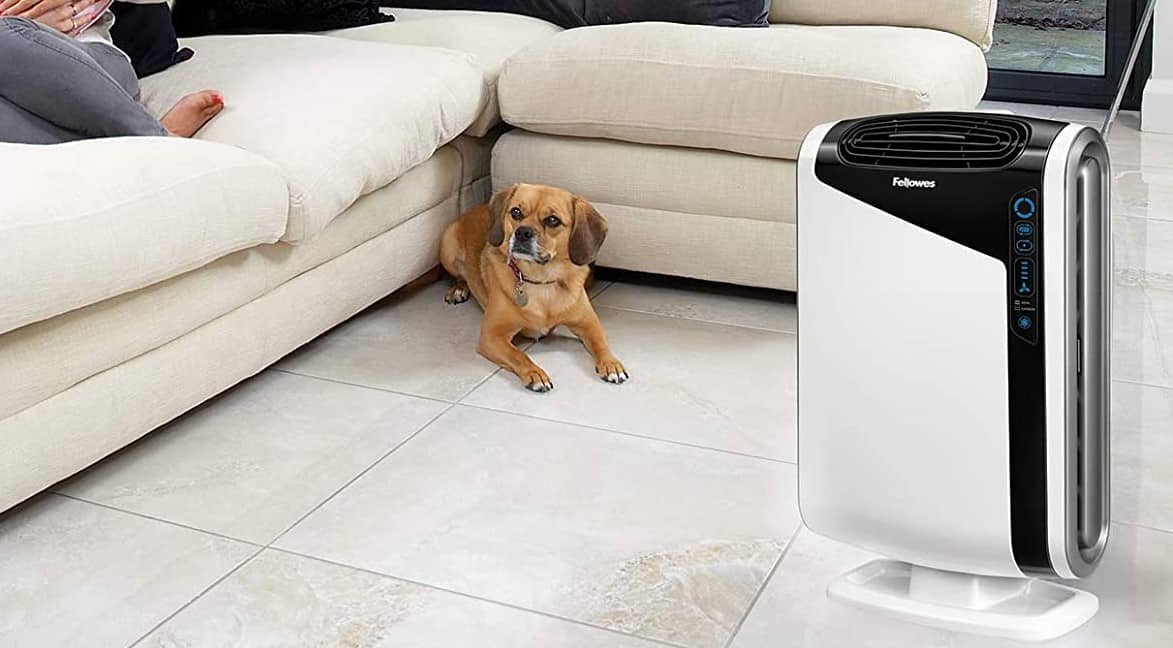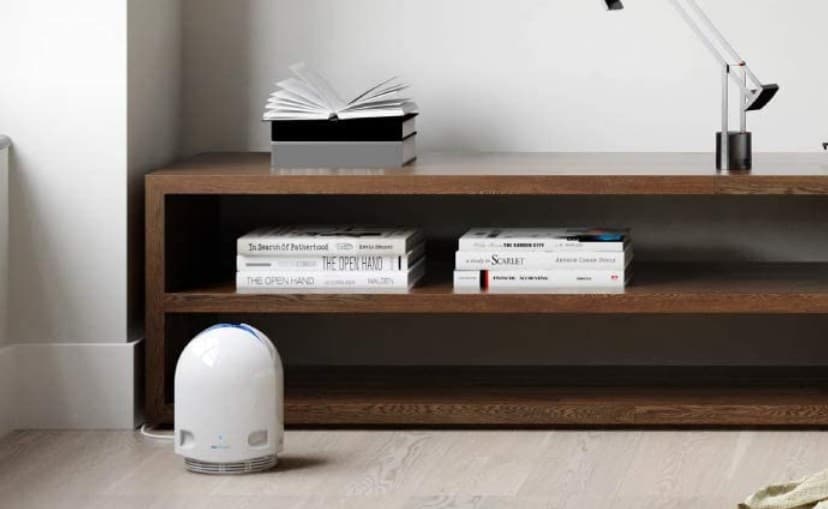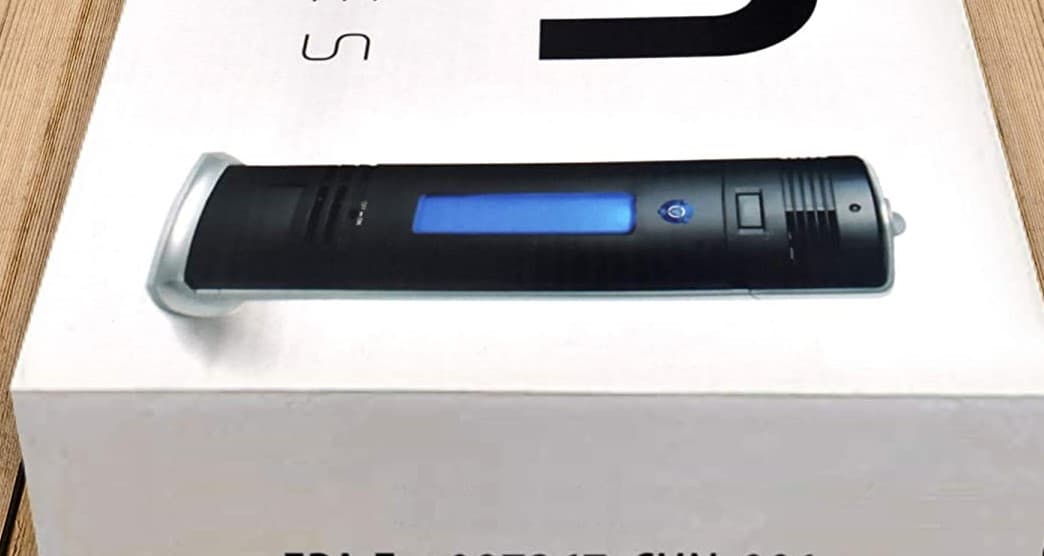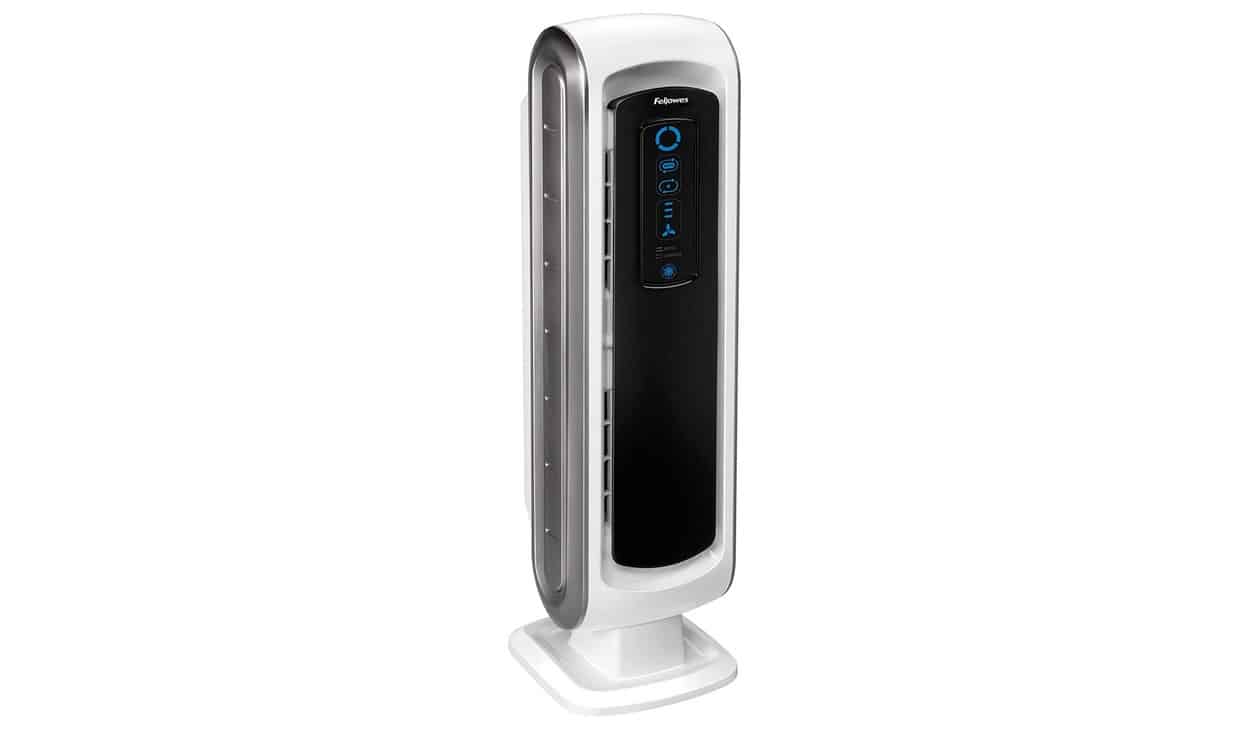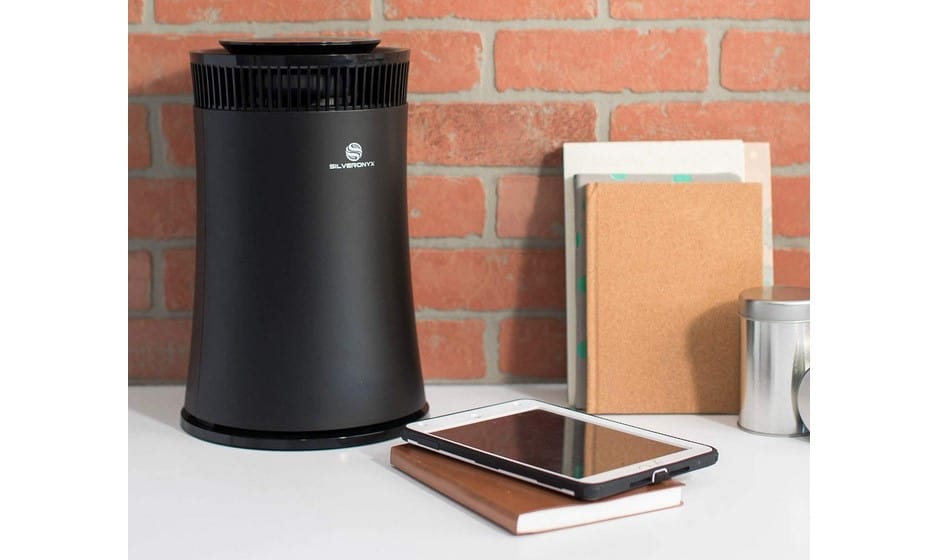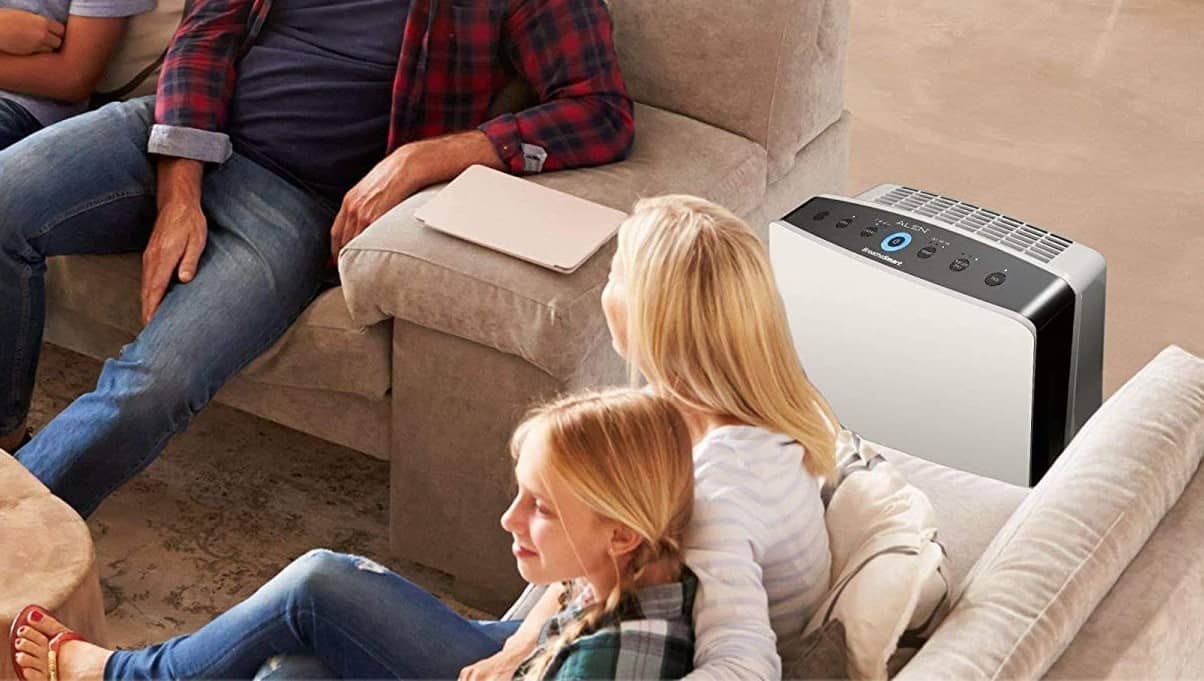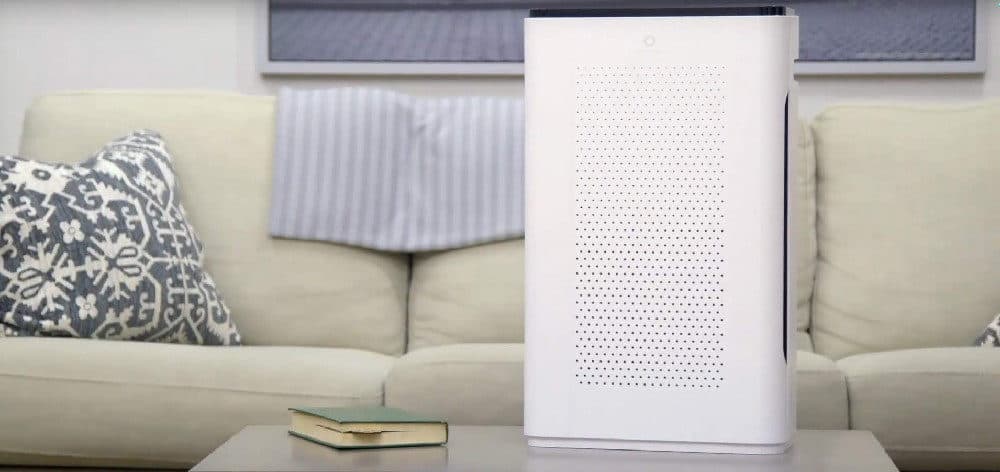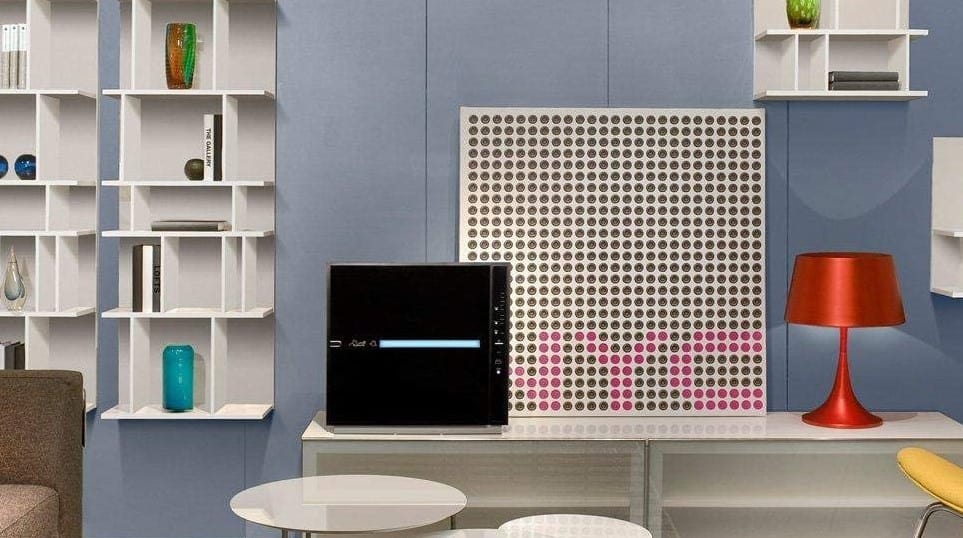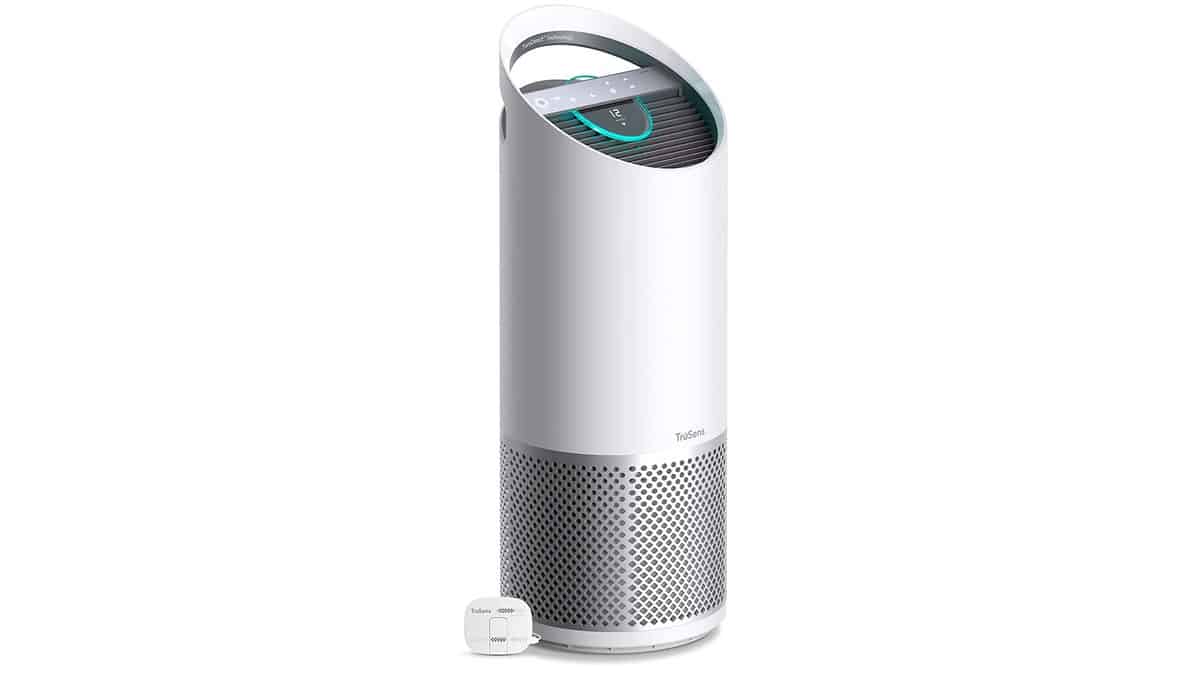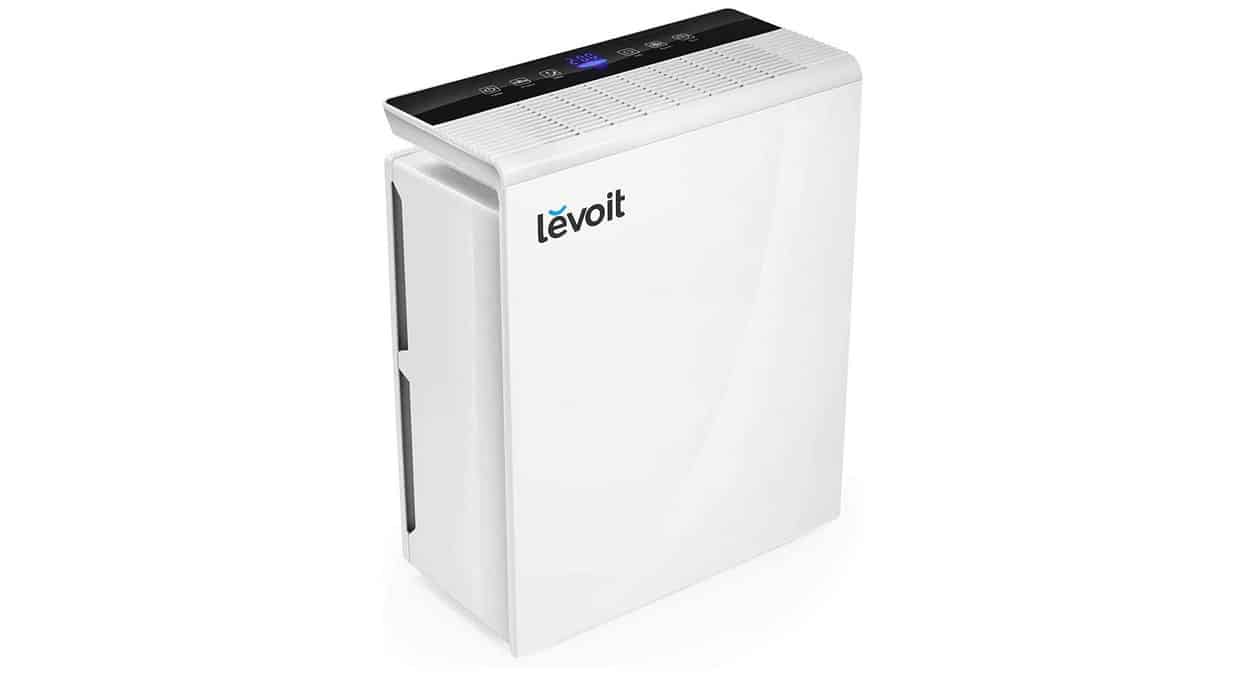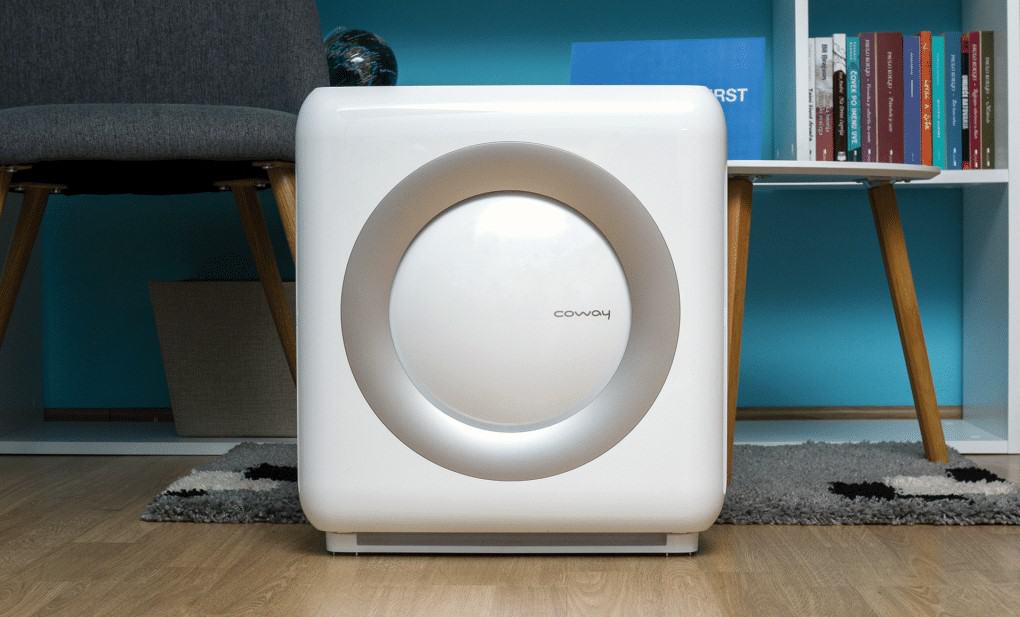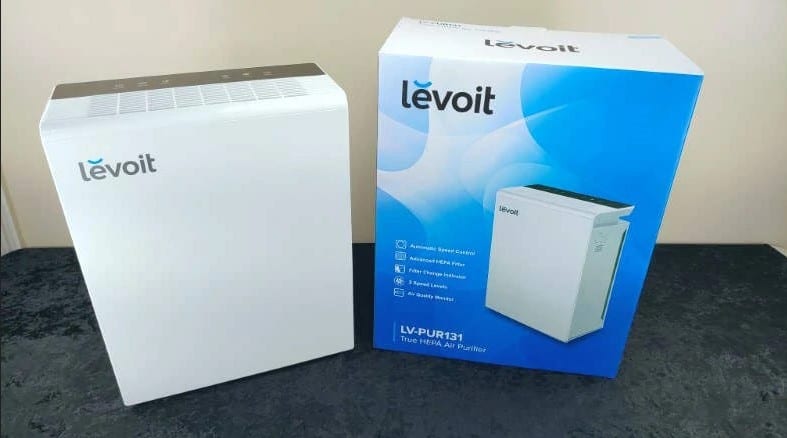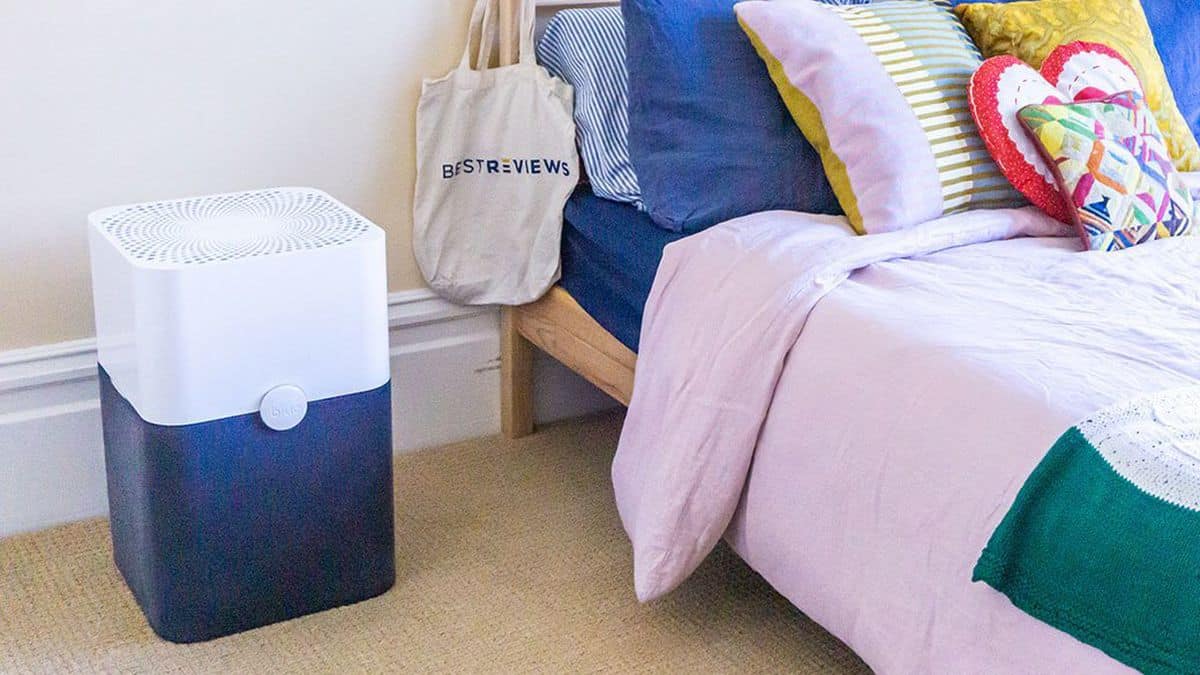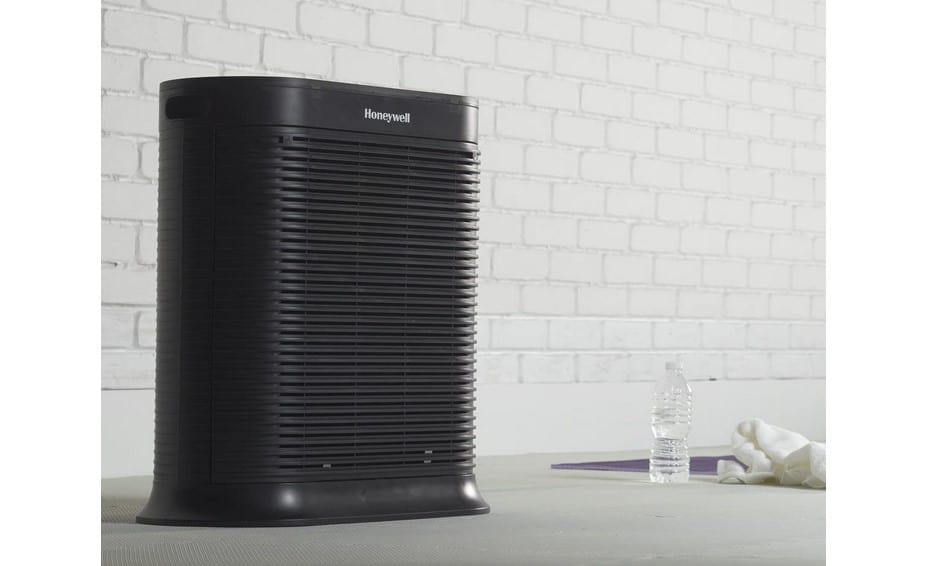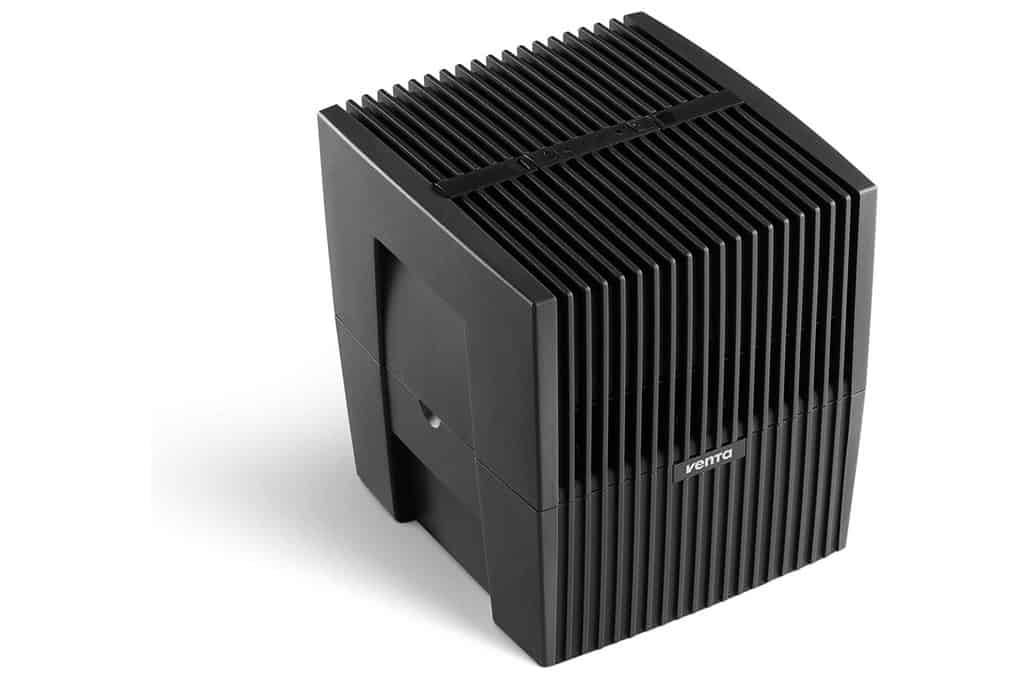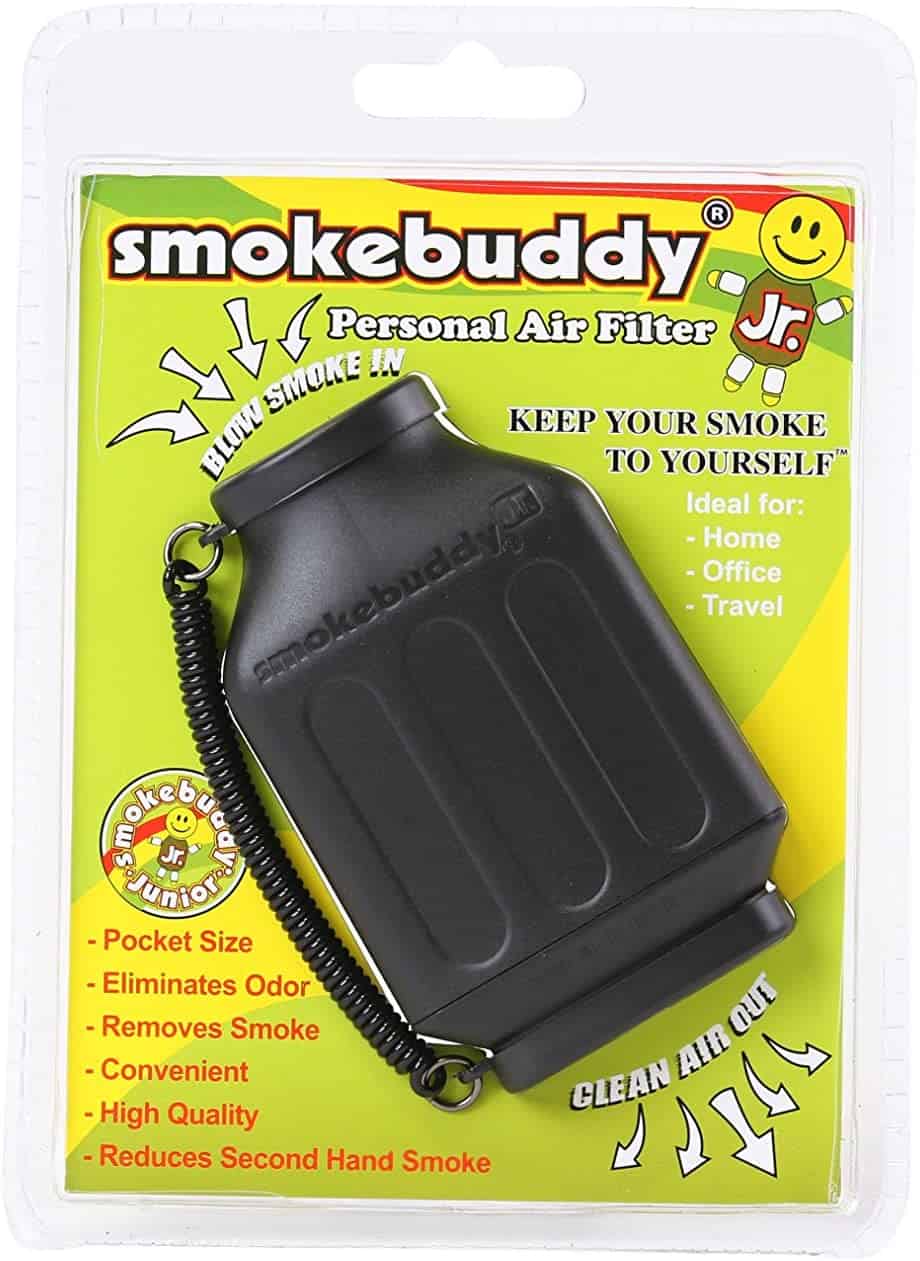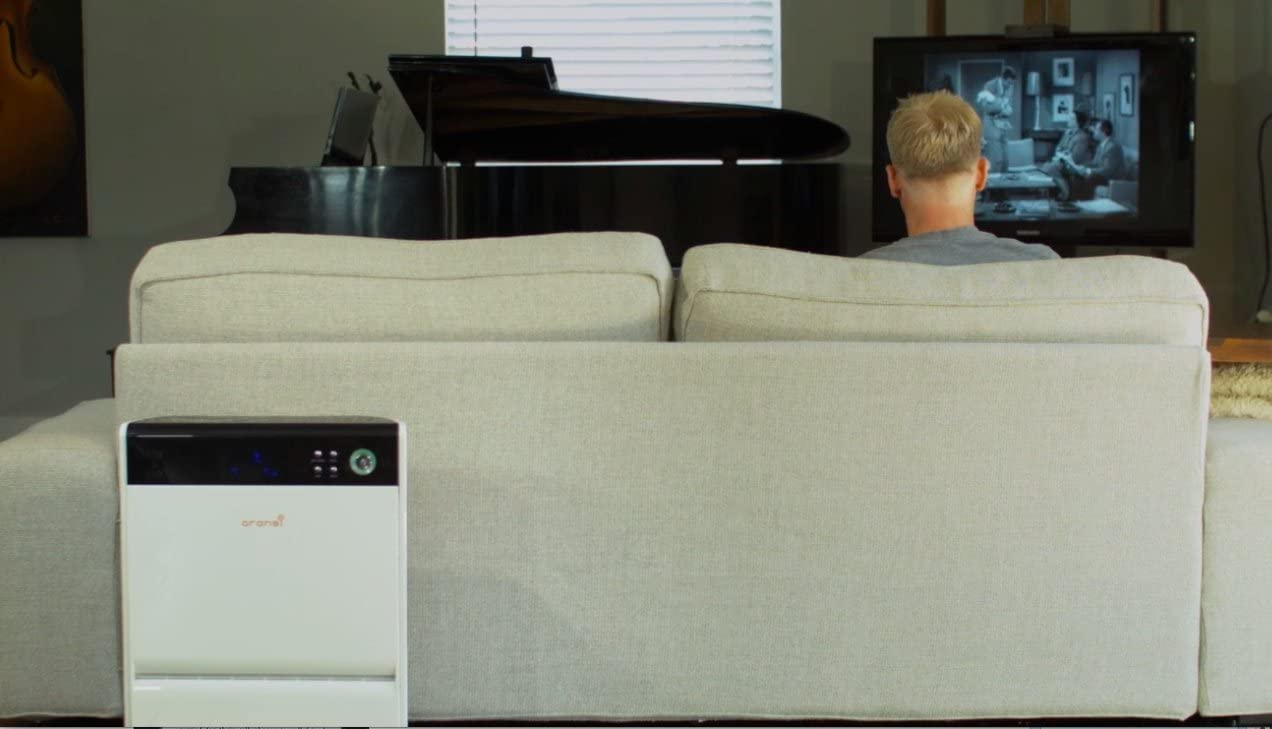If you’re shopping for the best air purifier, you want a unit that doesn’t make a lot of noise. So, the first feature to consider is the decibel output. Decibels are how we measure sound and depending on where you plan on housing your air purifier, you may need lower decibel ratings. More importantly, you want to consider the type of sound an air purifier makes. Even if the sound is low, if you find a whirring or whining noise annoying, you’re less likely to want to use the appliance.
Still, you want an effective air purifier. This means that you also need to consider the filtration method and if it’s compatible with the type of pollutants that you’re trying to remove from the air.
Top Quiet Air Purifiers
#1 Levoit Core 300 Air Purifier
Award: TOP PICK
WHY WE LIKE IT: It is very quiet during operation and has an energy star rating for efficient electricity consumption.
- Super quiet operation
- Energy star certified
- Night mode for uninterrupted sleep
- Pre-filter cannot be removed for cleaning
The Levoit Core 300 Air Purifier is a quiet and reliable alternative that can effectively clean the air in a small to midsize room. This is just like the AirFree Iris 3000, which is very quiet. The air purifier is perfect for rooms up to 219 square feet in size but can easily clean the air in rooms up to 547 square feet in as quickly as 30 minutes. The air purifier can filter out dust, bacteria, mite, pet dander, pollen, and wildfire smoke courtesy of its 3 stage filtration system. This system consists of a pre-filter, an H13 True HEPA filter, and an activated carbon filter. Unfortunately, its pre-filter cannot be removed for cleaning. But despite that, it still makes for a great HEPA air purifier. And, for more info on how to clean air purifiers correctly, check out our resource articles.
The Core 300 is also super quiet during operation, thanks to its QuietKEAP technology. When switched to night mode, its noise levels can be maintained at a decent 24dB, ensuring that it stays quiet enough not to disrupt sleep. Its display can also be turned off, and a timer set for 2, 4, 6, or 8 hours depending on user preferences. The air purifier is also Energy Star Certified, meaning it won’t lead to a hike in electricity cost.
#2 GermGuardian AC4825E 4-in-1 Air Purifier
Award: HONORABLE MENTION
WHY WE LIKE IT: It is an ideal option for use in small rooms. It also has a low noise mode to minimize disruption.
- Perfect for small size rooms
- Ultra quiet mode to minimize disruption
- Backed by a 3-year warranty
- No smart features or connectivity
The GermGuardian AC4825E is an energy-efficient air purifier that is ideal for cleaning the air in small rooms and ridding the air of germs, dust, pollen, and pet dander as small as 0.3 microns. The air purifier also comes with an activated carbon filter to eliminate odors, as well as a UV-C light source that reduces airborne bacteria, viruses, and spores. It is perfect for 153 sq ft rooms since it can clean the air there in almost 5 hours, but it can be used in rooms as large as 743 sq ft for one round of cleaning. Unfortunately, it does not have any smart features.
The air purifier features three-speed settings and can be switched to an ultra-quiet mode by users who would like to leave it on overnight. It has also got relatively impressive Clean Air Delivery Rates (CADR) for smoke (99), dust (118), and pollen (125).
#3 Medify MA-40 Air Purifier
Award: BEST FOR MEDIUM TO LARGE ROOMS
WHY WE LIKE IT: It is ideal for users who need to clean medium to large rooms. It has a very efficient filtration system and a child lock feature.
- Very efficient filtration system
- Child lock feature
- Lifetime service warranty
- No smart features
The Medify MA-40 is a rectangular-shaped air purifier that is great for medium to large spaces. It is also equipped with a HEPA H13 filter to remove up to 99.9% of unwanted particles in the air as small as 0.3 microns in size. It offers three fan speeds for users to choose from, where the lowest level produces only 46dB for quiet operation. The air filter is ideal for cleaning up spaces as large as 840 sq ft in as little as 30 minutes and is also energy-star certified for efficient energy consumption. Unfortunately, it does not have any smart features.
The air purifier is also pretty easy to use, and it has a touch screen with an 8-hour timer, a filter indicator, and a child lock. Its three layers of filtering ensure that dust, pet dander, smoke, mold, and bacteria get efficiently eliminated from the air for a healthier environment. Plus, it’ll make a great air purifier for pets. The best air purifier large room can also pull off cleaning the air of a big space.
#4 Alen Flex Air Purifier
Award: BEST FOR BIG SPACES
WHY WE LIKE IT: It is pretty quick at cleaning out the air in big spaces. It also has a sleep mode and does not consume a lot of electricity.
- Great for big spaces
- Sleep mode for quiet functioning
- Low energy consumption
- No air quality sensor or indicator.
Just like the Alen Breathesmart Classic, the Alen Flex air purifier is a powerful large room filter that can clean a room up to 700 sq ft in size in as little as 30 minutes. The air purifier boasts a Clean Air Delivery Rating (CADR) of 255 and has four-speed options to choose from. It also ensures quiet operation since, at its lowest speed setting, it only produces 39 dB. The air purifier is also Energy Star Certified for efficient power consumption. It does not, however, have an air quality sensor and indicator.
This air purifier relies on a four-stage filtration system, which includes a medical-grade H13 True HEPA filter for cleaning out up to 99.99% of bacteria and airborne particles that are larger than 0.1 microns, as well as an activated carbon filter for eliminating foul odors and smoke. It also comes with a sleep mode for those who want to keep it on overnight, where its lights can be turned off to make it less disruptive.
#5 Hathaspace HSP001 Air Purifier
Award: BEST FOR CONVENIENCE
WHY WE LIKE IT: It comes with a remote control for convenient use and displays a room’s air quality through different color codes that are easy to interpret.
- Very efficient filtration system
- Comes with an air quality indicator
- Remote control included
- No Filter change indicator
The Hathaspace HSP001 air purifier features an elaborate five-stage filtration system for cleaning out up to 99.97% of airborne particles as small as 0.3 microns from the air. It can clean up the air in a 700 sq ft space once an hour, and since it comes with a built-in ionizer, it is also pretty good at eliminating odors. The air purifier can efficiently eliminate allergens, dust, pet dander, pollen, smoke, and Volatile Organic Compounds, but unfortunately, it does not have a filter change indicator.
Users who would not want to constantly adjust their fan speed can also set it to auto mode, where it should be able to easily calibrate its functioning according to the air quality detected. It also displays its findings on its digital display, so owners will always be able to identify the kind of air quality in their living space. The air purifier can also operate with its display turned off when switched to sleep mode and comes with a remote control for more convenient operation.
#6 Blue Air Blue Pure 211+ Air Purifier
Award: BEST FOR AESTHETICS
WHY WE LIKE IT: Its contemporary design is sure to fit in well in a modern space, and since it has an energy star rating, users won’t have to spend a lot of money on electricity costs.
- Great for large areas
- Great design
- Comes with two washable pre filters
- No automatic functioning mode
The Blue Air Blue Pure 211+ air purifier relies on Swedish Filter technology to rid the air of airborne pollutants such as pollen. It also has an activated carbon filter to get rid of foul odors and can be switched to a quiet setting to avoid disruptions. The air purifier also has very low energy consumption, and with two washable pre-filters, it is very efficient at catching larger particles. Unfortunately, the air purifier does not have an auto mode.
With a Clean Air Delivery Rating (CADR) of 350 CFM for smoke, pollen, and dust particles, the Pure 211+ establishes itself as a high-performance filter that can easily clean up the air in a 540 sq ft room up to five times per hour. When switched to its lowest speed, it gets as quiet as 32 dB and features one button for easy operation. Adding to its contemporary design, its color can also be changed by switching through its five fabric pre-filter options, and since it is built to allow for a 360° air intake, users can place it anywhere in the house without impacting performance.
Beginner’s Guide to Quiet Air Purifiers
What are Quiet Air Purifiers
A quiet air purifier is simply an air purifier with a low decibel output. Decibels (written as dB) are how we measure sound output and range from as little as zero to as high as 145 decibels. The lower the figure, the quieter the sound output. For air purifiers, the sound being measured is made by the fan that powers the filtration system to draw in air to be cleaned.
For example, normal breathing is measured at 10 decibels while fireworks are measured at 145 decibels. Ideally, for air purifiers, you would want to look for a unit that even at the highest fan speed doesn’t emit more than 50 decibels. This would be on par with a quiet office setting, a normal conversation, or the sound of an air conditioner.
Quiet air purifiers can be ideal if you want to use them in a bedroom or if you’re sensitive to noise. The lower decibel output ensures that you won’t be disturbed by background noise while trying to sleep, work, or relax. To take care of germs, you can also check the best germicidal air purifier.
Quiet Air Purifiers vs. Air Purifiers
Quiet air purifiers don’t necessarily have a special type of filtration method. The biggest differentiator between them and standard air purifiers is the decibel output. Quiet air purifiers tend to produce less noise in every setting.
But this is especially important if you prefer to run your air purifier at the highest speed. In short, the reduced noise output makes using an air purifier less obtrusive and ensures that you’re more likely to run it as intended — continuously.
You can find quiet air purifiers that contain the common filtration methods. This includes HEPA filters, activated carbon filters, ionizers, and UV light. This means they can be great candidates for high-end ionic air purifiers. However, just like with traditional air purifiers, you’ll need to consider which contaminants you want to remove from the air and select the filtration method that’s most effective at removing those particles from the air.
How Quiet Air Purifiers Work
Quiet air purifiers work exactly like any other air purifier. The only difference is in the noise output. Typically your air purifier will have a washable pre-filter located near the intake portal. Air is drawn in through this portal and passes through the pre-filter where larger particles are removed. The pre-filter helps to reduce the overall workload for the primary filter.
Once the air passes through the pre-filter, the air enters a chamber where the primary filter is located. The air passes through the filter where smaller particles or gases and vapors are trapped in the filter. The clean air is then pushed through the outtake portal and released back into the room. This is an ideal feature for anyone looking for the best air purifier for basements.
The most effective filtration methods include HEPA filters, carbon activated filters, photoelectrochemical oxidation (PECO), and UV light. HEPA filters are effective against dust, smoke, pollen, and mold with the ability to remove particles as small as 0.03 microns.
Activated carbon is ideal for removing odors along with volatile organic compounds (VOCs). UV light can neutralize odors as well as remove pathogens from the air as long as the light mode lasts for at least several minutes.
And PECO is proprietary to the Molekule air purifiers but is very effective at removing pathogens, VOCs, smoke, and pollen. While it’s effective at removing dust, it can only catch particles between one to three microns as opposed to the 0.03-micron threshold found with HEPA filters. Although, you might find other benefits from using some of the leading filterless air purifiers.
Why You Should Buy a Quiet Air Purifier
Some people are easily bothered by what others would consider background noise. While a little white noise might be perfectly fine, it can be distracting in workspaces or lounging areas, and even prevent getting a good night’s rest for others. In this scenario, a quiet air purifier can be a smart investment.
Are Quiet Air Purifiers Worth Buying?
You’re a Light Sleeper: If you easily wake up from the noise, or struggle to fall asleep if there’s too much ambient noise, a quiet air purifier is a good choice.
You Need Quiet to Concentrate: Not everyone works well with distractions nearby. If this sounds familiar, a whisper-quiet air purifier can ensure that your concentration stays where it belongs — on the task at hand.
You Want an Air Purifier in a Shared Space: Even if you don’t struggle with white noise, if you’re thinking of using an air purifier in a shared space, that doesn’t mean that it won’t bother others. Quiet air purifiers can ensure that no one is disturbed.
Why Quiet Air Purifiers May Not Be for You
You Don’t Feel You Need an Air Purifier: It’s an obvious choice, but if you don’t think there’s a problem with your indoor air quality, then even a quiet air purifier may feel like an unnecessary expense.
You’re Very Sensitive to Sounds: While you can get air purifiers with ultra-quiet modes, some people are extremely sensitive to any foreign sounds. In this case, an air purifier might not be a realistic choice.
How Long Will Quiet Air Purifiers Last?
In terms of the device, air purifiers can last several years before needing to be replaced. But the real question is how long does the filter last, and how much are the replacement filters. Pricing and timelines can vary depending on the filtration technology an air purifier uses.
HEPA filters have the longest timespan at six to 12 months, but cost the most with a maximum expense of $200. Activated carbon filters are the cheapest with a maximum spend of $50 but need to be replaced more frequently at three to six-month intervals.
And if you decide to upgrade to the more expensive Molekule air purifiers, there are pre-filters and main filters that must be replaced regularly. The pre-filter must be replaced every three months while the main filter should be swapped every six months. The filters range from $80 to $150.
How to Choose Quiet Air Purifiers
Ultimately, you might need to try a bit of trial and error to find the right air purifier that not only has a low sound output but in a frequency that doesn’t irritate you. Keep in mind that even a low sound can be annoying if the vibrations seem “off”. But you’ll still want to consider the overall efficacy of the unit and ensure that the filtration method is compatible with the pollutants most commonly found in your home.
Quiet Air Purifiers Key Factors to Consider
1. What is the decibel rating?
If quiet is your priority, then you need to pay attention to the decibel rating. Ideally, your preferred air purifier will offer a decibel range. This will indicate how much sound is created in the lowest and highest settings.
Aim for a range that has a maximum output of around 50 decibels. The lower sound range is ideal if you prefer quiet rooms or want to place your air purifier in a bedroom. Meanwhile, the higher sound range means that you can place the air purifier in communal rooms like living rooms and it won’t compete with televisions or music players.
If you’re very sensitive to noise, try to find models with maximum outputs in the 20- to the 30-decibel range.
2. What pollutants do you need to remove?
Not all filtration technology is considered equal. So, you need to match the air purifier’s filter with the pollutant you want to remove. HEPA filters are best for smoke, dust, mold, and pollen. Activated carbon filters are ideal for odors and VOCs, most of which you can find on the top-rated air purifiers for VOCs and formaldehyde.
UV light is ideal for mold and pathogens. And PECO which is proprietary to Molekule air purifiers can filter all of the common pollutants but doesn’t remove dust quite as effectively as a HEPA filter.
3. How many settings are there?
Most air purifiers offer multiple modes or fan speeds. A higher fan speed is ideal when you first begin using the unit or if you notice that the indoor air quality has decreased. But ideally, you should be able to run an air purifier continuously on a lower setting.
Additionally, there should be an automatic mode where the air purifier detects when air quality has dipped and increases the fan speed to correct the change.
4. How frequently do the filters need to be changed?
Again, different filters have different timelines. HEPA filters have the longest range of six to 12 months between changes. Activated carbon filters must be replaced every three to six months. And PECO filters must be changed every six months.
5. Is there a sleep mode?
If quiet is the overall goal, an air purifier with a sleep mode is a smart choice. This ensures that the unit is set to the lowest fan speed possible for the least sound output. Additionally, other features like control panel lights might also be dimmed so that you won’t be disturbed.
6. What is the CADR score?
The CADR score stands for clean air delivery rate and determines how efficiently an air purifier can move and clean air through a room. As with anything else, a higher score usually reflects that a unit is more efficient. CADR scores also denote room size compatibility.
But note that CADR scores vary depending on the pollutant and that you can only get these scores for dust, mold, and smoke. A general guide is to pick an air purifier with a CADR score that’s rated for a room slightly larger than where you intend to place your unit.

![Best Quiet Air Purifiers in [year] 1 best quiet air purifier](https://www.gadgetreview.dev/wp-content/uploads/best-quiet-air-purifier-image.jpg)


![Best Quiet Air Purifiers in [year] 2 LEVOIT Air Purifier for Home Allergies Pet Hair in...](https://m.media-amazon.com/images/I/419EDCYNm+L._SL160_.jpg)
![Best Quiet Air Purifiers in [year] 4 GermGuardian 4-In-1 HEPA Air Purifier for Home, Large...](https://m.media-amazon.com/images/I/316AtkHoSdL._SL160_.jpg)
![Best Quiet Air Purifiers in [year] 6 Medify MA-40 Air Purifier with True HEPA H13 Filter |...](https://m.media-amazon.com/images/I/41UpV5EENCL._SL160_.jpg)
![Best Quiet Air Purifiers in [year] 12 Our #4 Pick is the Alen Flex Air Purifier](https://m.media-amazon.com/images/I/31o8pDjfD0L._SL160_.jpg)
![Best Quiet Air Purifiers in [year] 13 Our #5 Pick is the Hathaspace HSP001 Air Purifier](https://m.media-amazon.com/images/I/41Yz4QP+k+L._SL160_.jpg)
![Best Quiet Air Purifiers in [year] 15 Our #6 Pick is the Blue Air Blue Pure 211+ Air Purifier](https://m.media-amazon.com/images/I/212cBsLQFvL._SL160_.jpg)


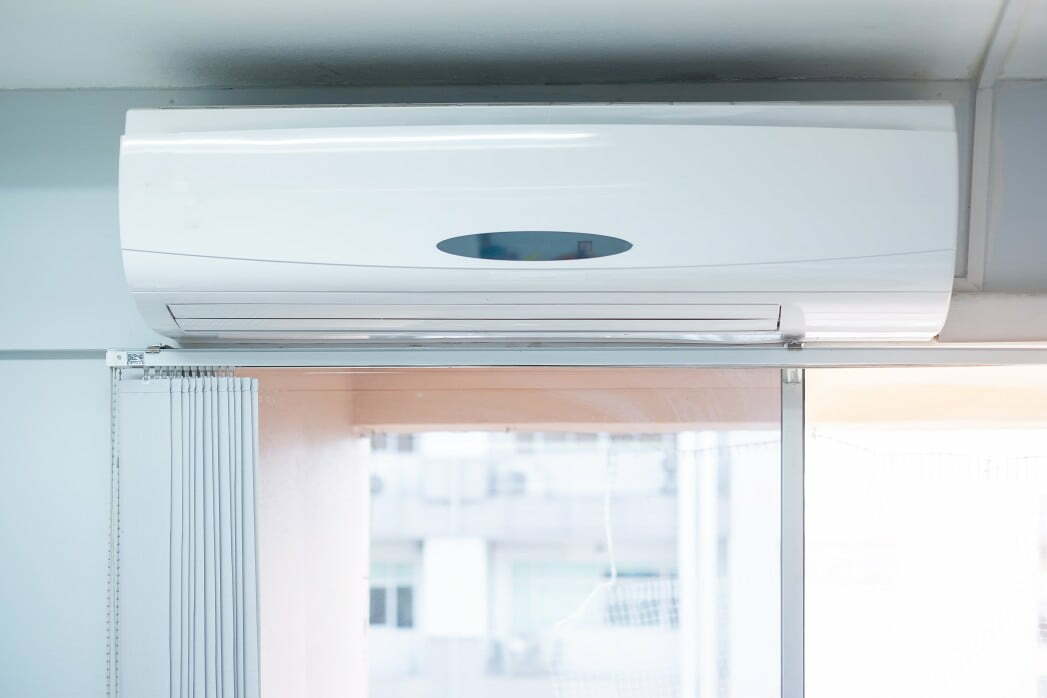
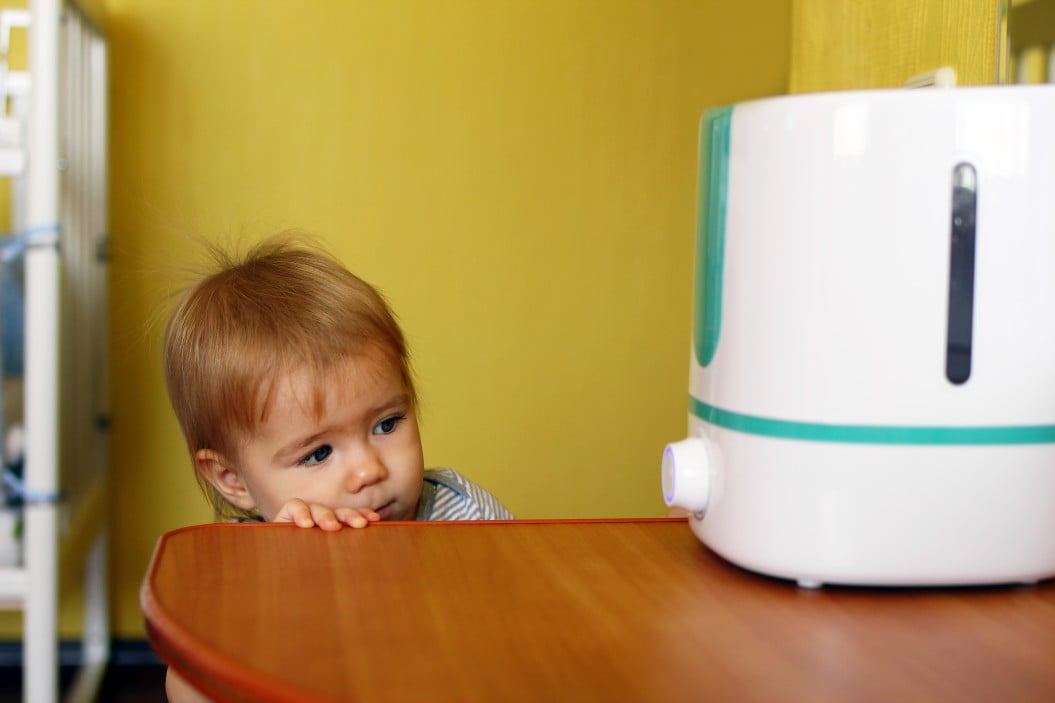
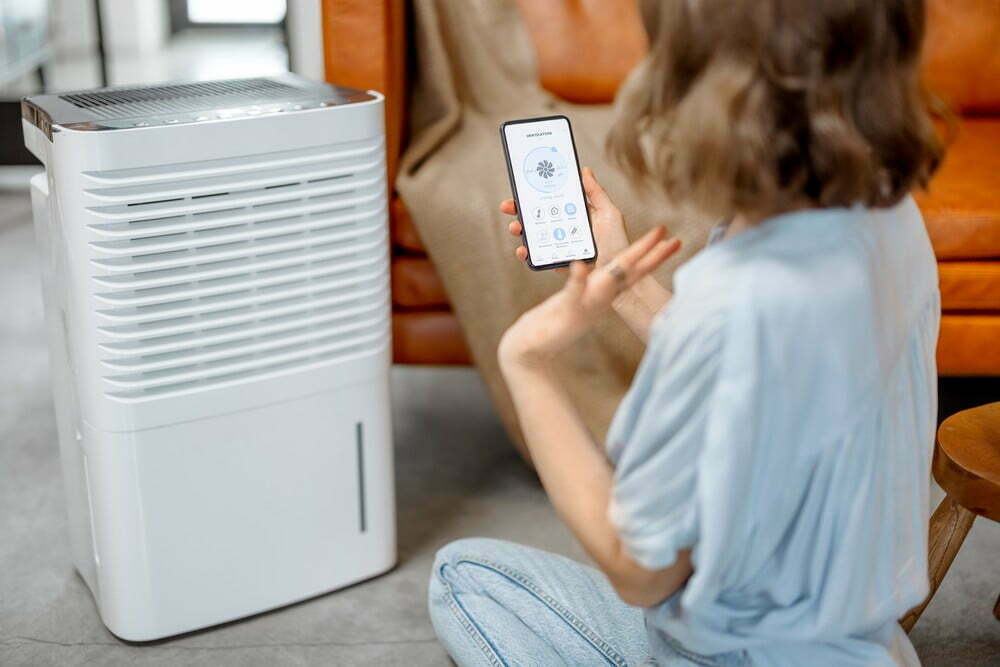
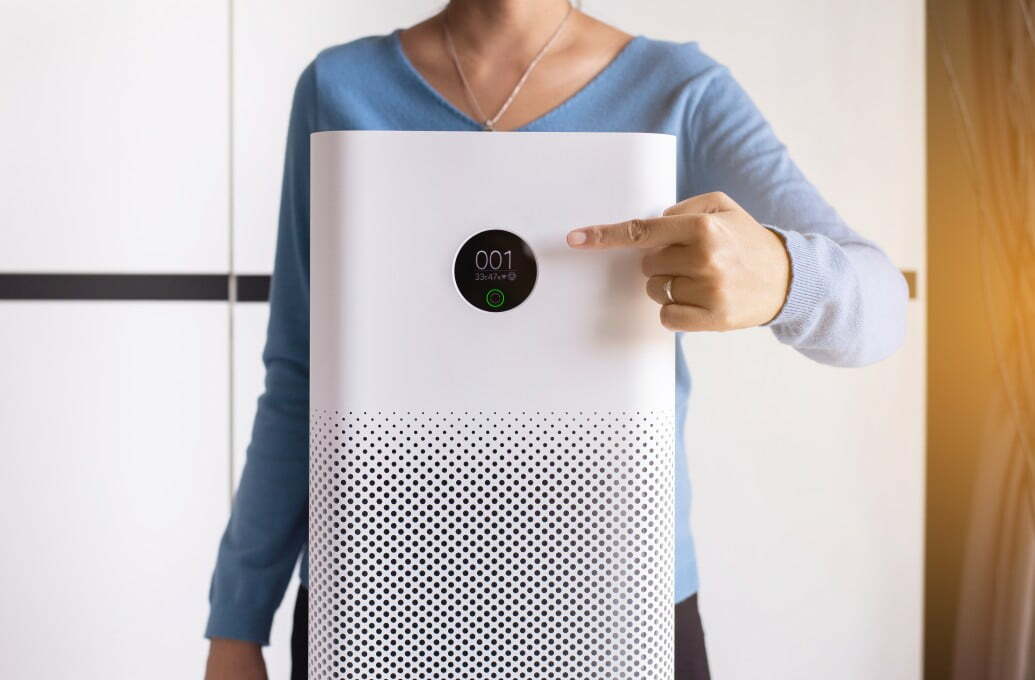
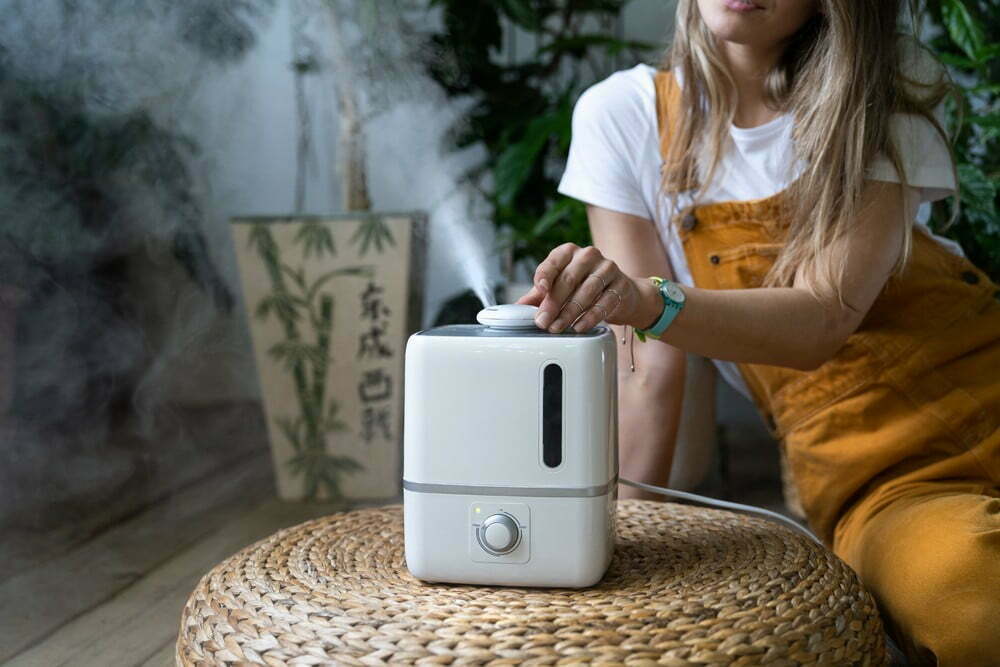
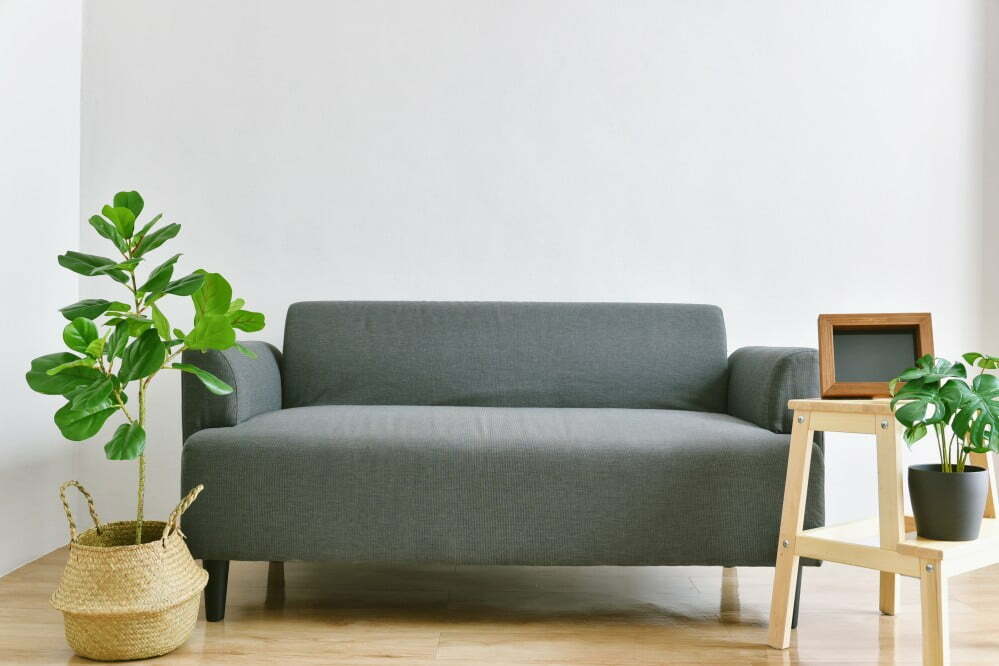

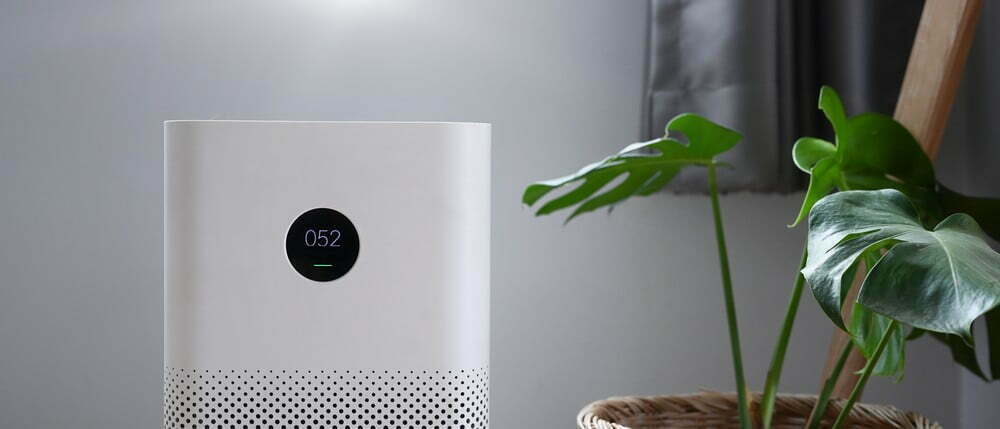
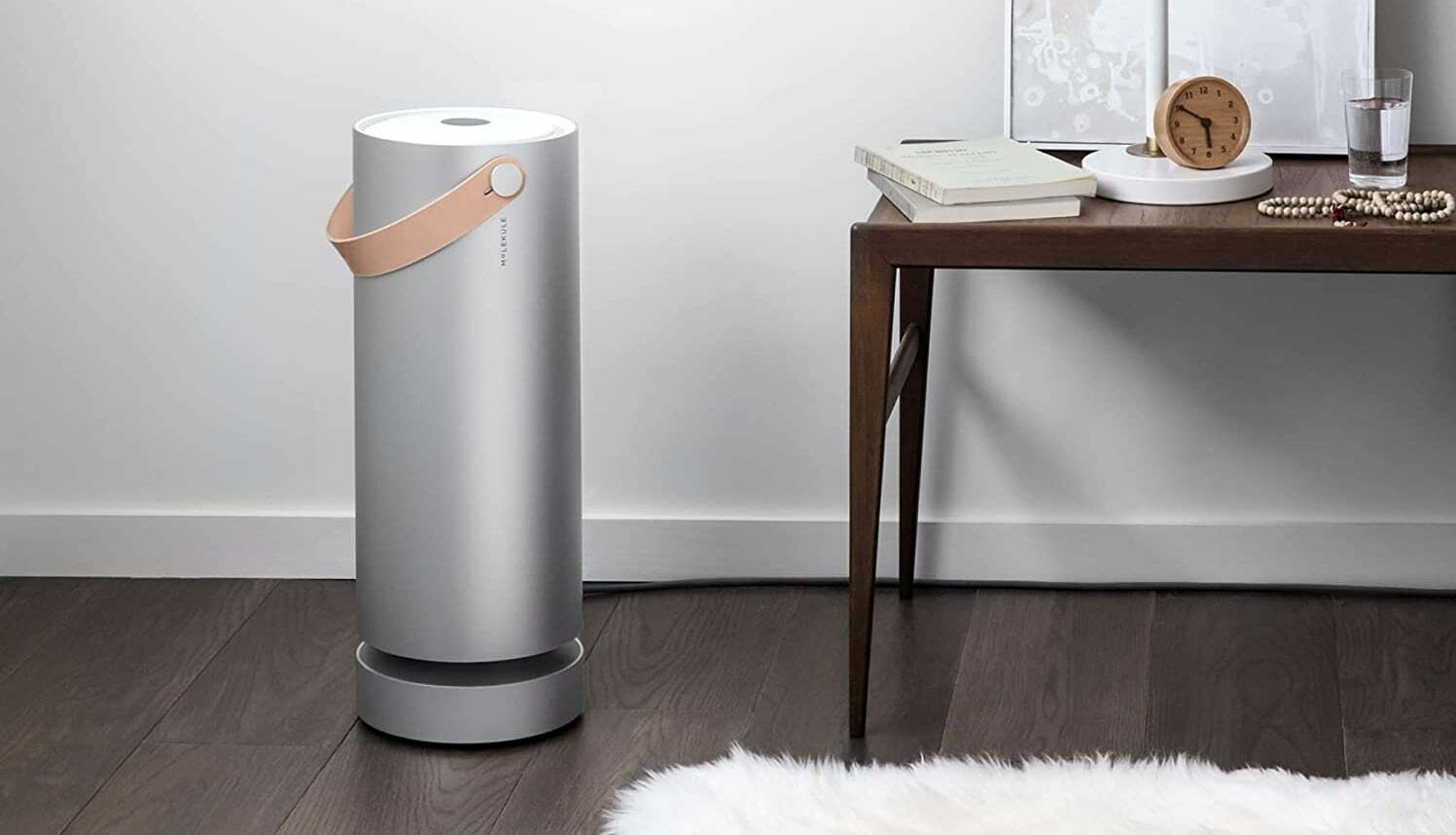
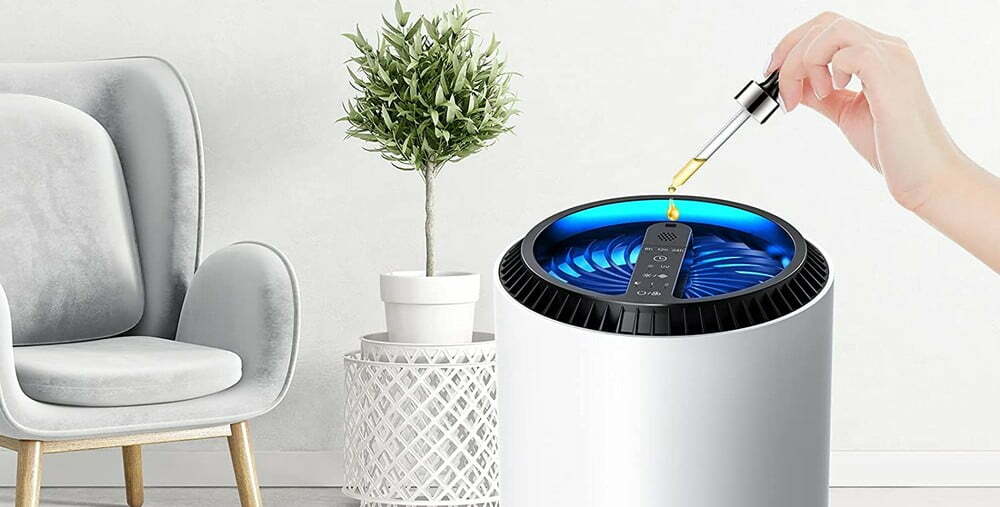
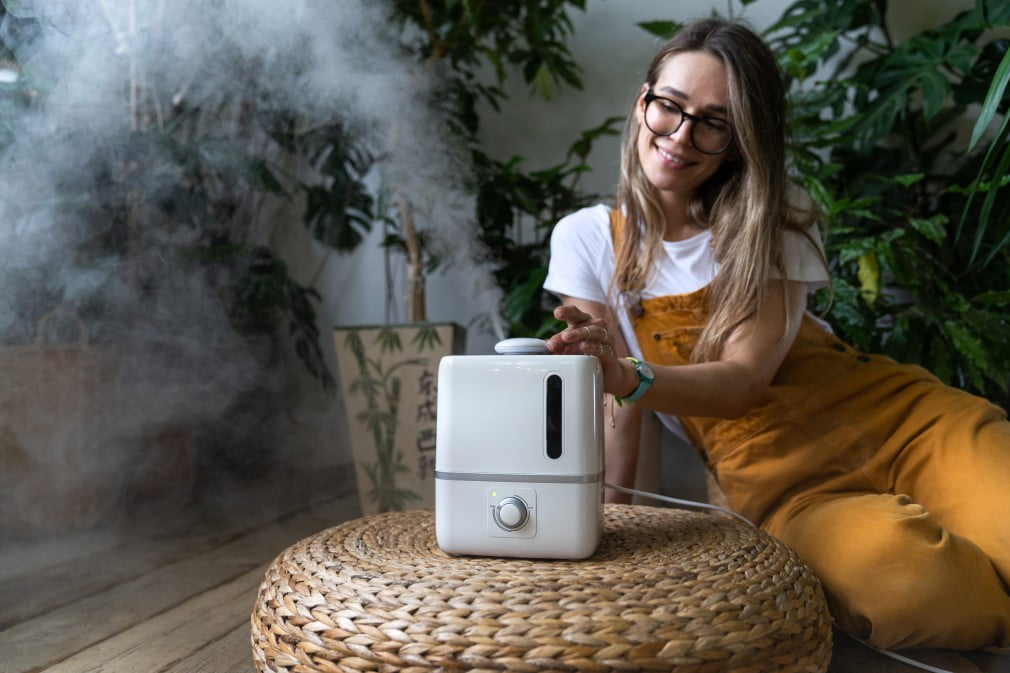
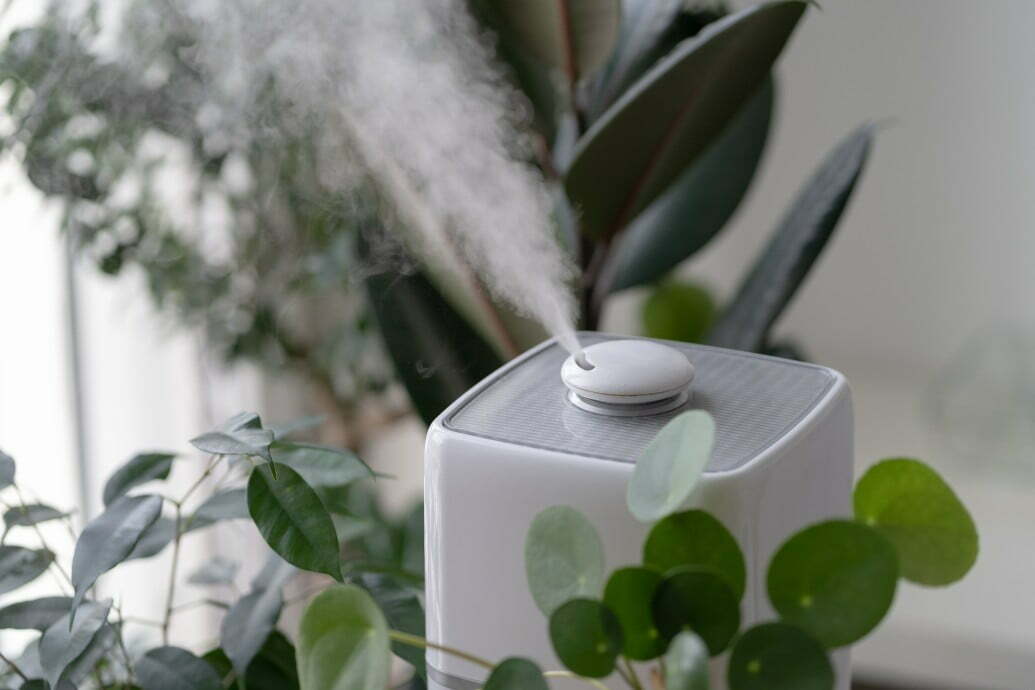
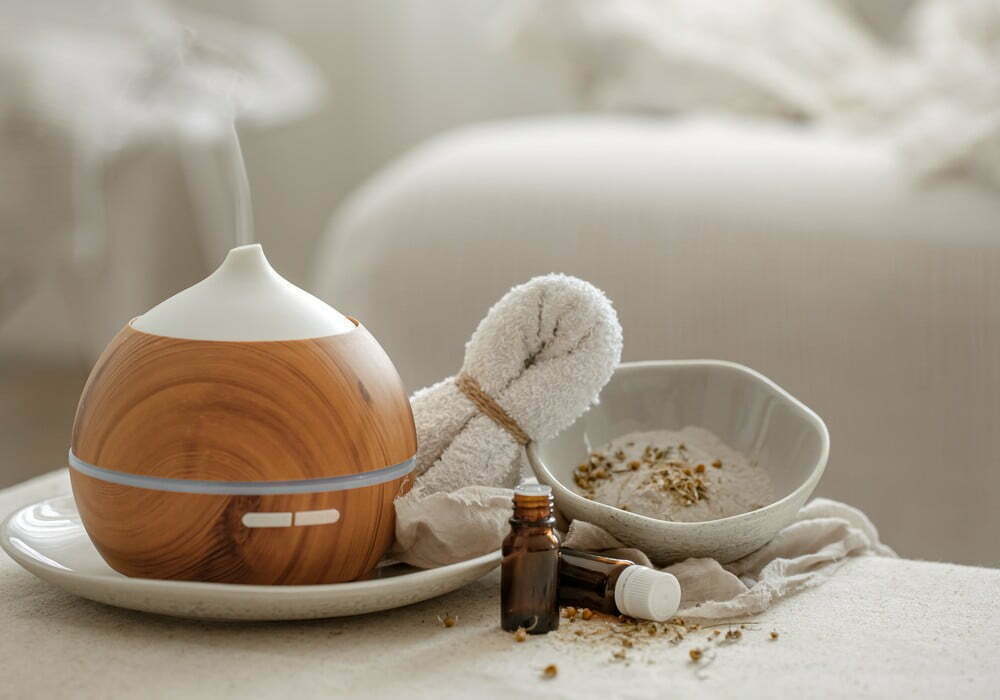
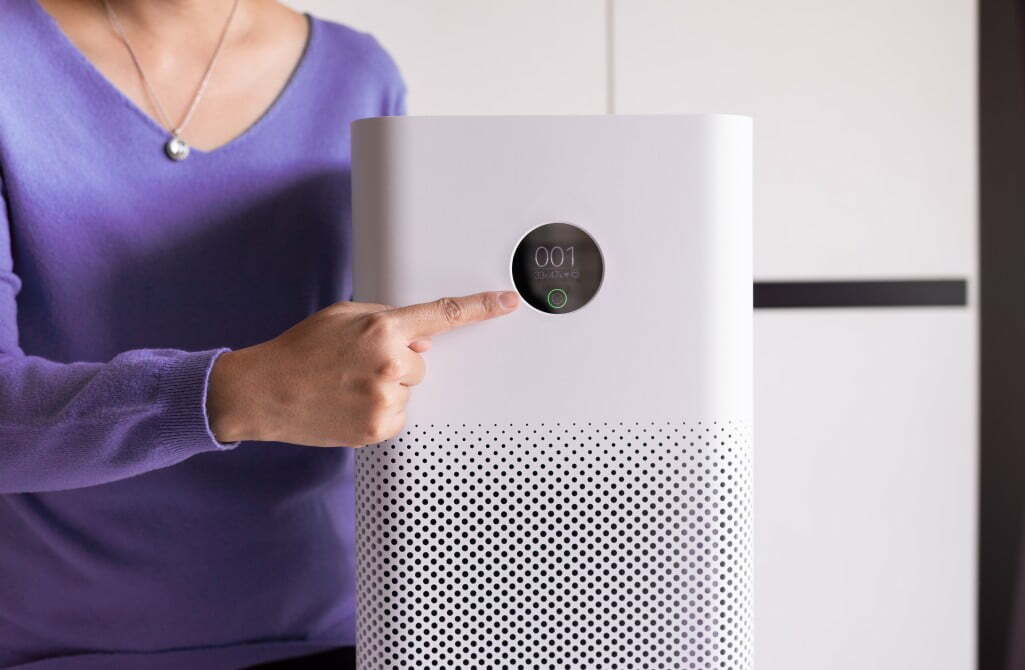
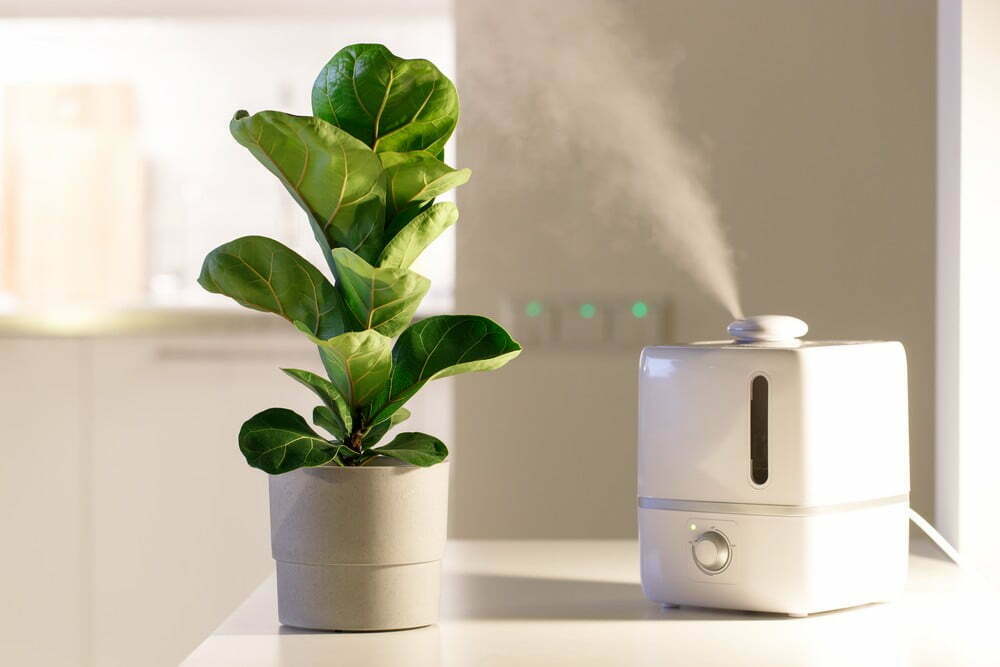
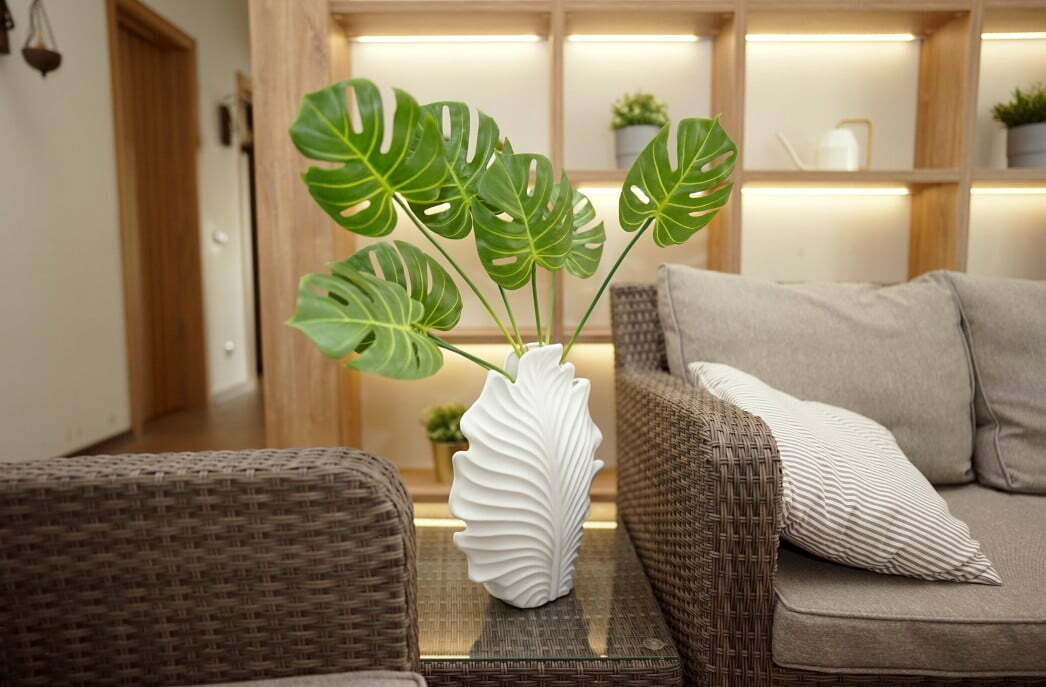
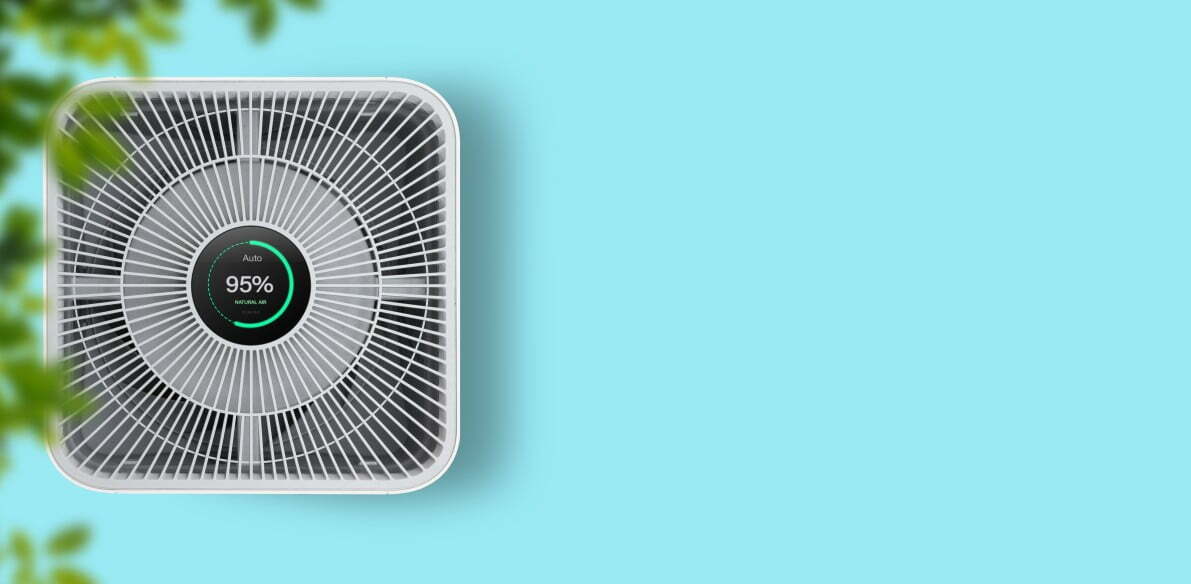
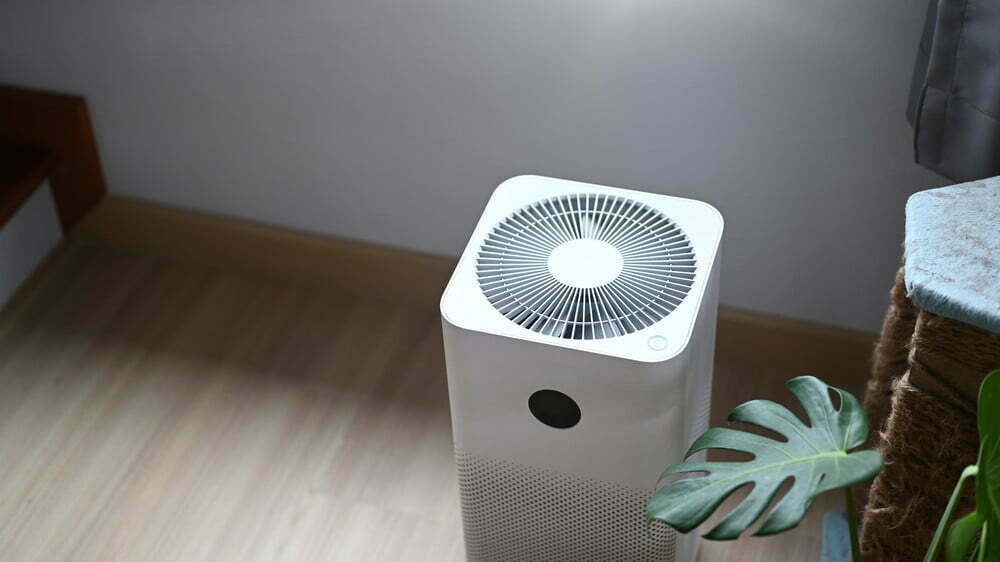
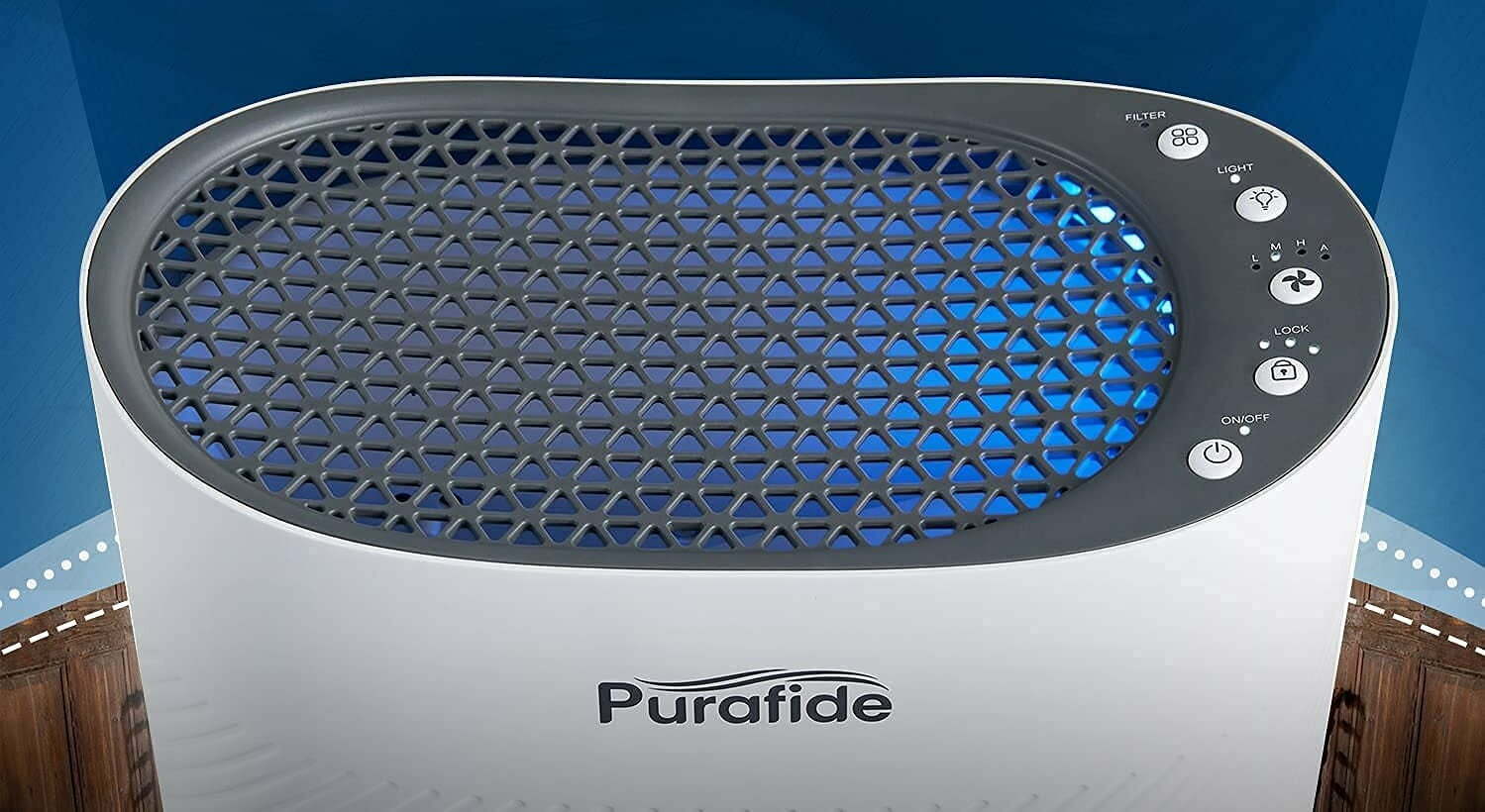
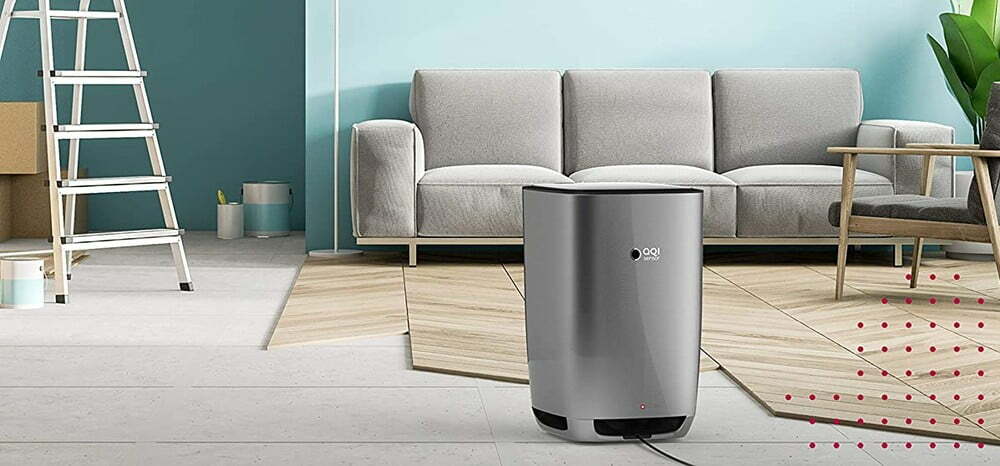
![Best Air Purifiers for VOCs and Formaldehyde in [year] 37 Best Air Purifiers for VOCs and Formaldehyde in 2026](https://www.gadgetreview.dev/wp-content/uploads/best-air-purifier-for-vocs-and-formaldehyde-image.jpg)
![Best Air Purifier in [year] ([month] Reviews) 38 Best Air Purifier in 2026 (January Reviews)](https://www.gadgetreview.dev/wp-content/uploads/Honeywell-True-HEPA-Allergen-Remover-HPA300-e1475603569442.jpg)
![Best Air Purifiers for Dust in [year] 39 Best Air Purifiers for Dust in 2026](https://www.gadgetreview.dev/wp-content/uploads/best-air-purifier-for-dust-image.jpg)
![Best Honeywell Air Purifiers in [year] 40 Best Honeywell Air Purifiers in 2026](https://www.gadgetreview.dev/wp-content/uploads/best-honeywell-air-purifier-image.jpg)
![Best Germicidal Air Purifiers in [year] 41 Best Germicidal Air Purifiers in 2026](https://www.gadgetreview.dev/wp-content/uploads/best-germicidal-air-purifier-image.jpg)
![Best Filterless Air Purifiers in [year] 42 Best Filterless Air Purifiers in 2026](https://www.gadgetreview.dev/wp-content/uploads/best-filterless-air-purifier-image.jpg)
![Best Levoit Air Purifiers in [year] 43 Best Levoit Air Purifiers in 2026](https://www.gadgetreview.dev/wp-content/uploads/best-levoit-air-purifier-image.jpg)
![Best Air Purifiers for Smoking Weed in [year] 44 Best Air Purifiers for Smoking Weed in 2026](https://www.gadgetreview.dev/wp-content/uploads/best-air-purifier-for-smoking-weed-image.jpg)
![Best Desktop Air Purifiers in [year] 46 Best Desktop Air Purifiers in 2026](https://www.gadgetreview.dev/wp-content/uploads/best-desktop-air-purifier.jpg)
![Best Dyson Air Purifiers in [year] 47 Best Dyson Air Purifiers in 2026](https://www.gadgetreview.dev/wp-content/uploads/best-dyson-air-purifier.jpg)
![Best Air Purifiers for Dorm Room in [year] 48 Best Air Purifiers for Dorm Room in 2026](https://www.gadgetreview.dev/wp-content/uploads/air-purifier-for-dorm-room-1.jpg)
![Best Air Purifiers for Office in [year] 49 Best Air Purifiers for Office in 2026](https://www.gadgetreview.dev/wp-content/uploads/best-air-purifier-for-office.jpg)
![Best Air Purifiers for Basement in [year] 50 Best Air Purifiers for Basement in 2026](https://www.gadgetreview.dev/wp-content/uploads/best-air-purifier-for-basement.jpg)
![Best Air Purifiers For Odor in [year] 51 Best Air Purifiers For Odor in 2026](https://www.gadgetreview.dev/wp-content/uploads/best-air-purifier-odor.jpg)
![10 Best Personal Air Purifiers in [year] 52 10 Best Personal Air Purifiers in 2026](https://www.gadgetreview.dev/wp-content/uploads/best-personal-air-purifiers.jpg)
![10 Best Plug In Air Purifiers in [year] 53 10 Best Plug In Air Purifiers in 2026](https://www.gadgetreview.dev/wp-content/uploads/best-plug-in-air-purifier-image.jpg)
![10 Best Whole House Air Purifiers in [year] 54 10 Best Whole House Air Purifiers in 2026](https://www.gadgetreview.dev/wp-content/uploads/best-whole-house-air-purifier-image.jpg)
![10 Best Large Room Air Purifiers in [year] 55 10 Best Large Room Air Purifiers in 2026](https://www.gadgetreview.dev/wp-content/uploads/Coway-Airmega-200M-Large-Room-Air-Purifier-900x900-1.png)
![10 Best UV Air Purifiers in [year] 56 10 Best UV Air Purifiers in 2026](https://www.gadgetreview.dev/wp-content/uploads/best-uv-air-purifier.jpg)
